This is an MBTI blog for exclusively fictional characters. I do not provide typings of video games. Apologies. I am also aware that some parts of this blog need updating and there are broken links. I am working on improving this blog whenever I can. Thank you for the follow and for sticking with me.
Don't wanna be here? Send us removal request.
Photo
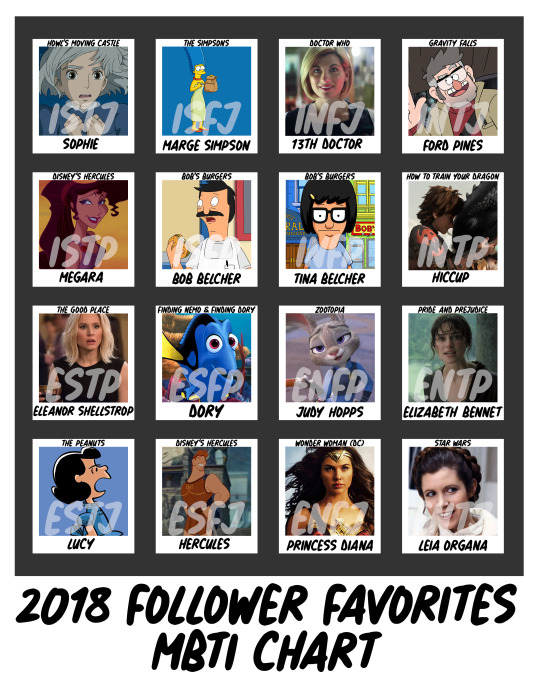
These are the followers’ favorites for each type! Followers voted these characters as their favorite for each type for 2018.
Below you can find their character portraits explaining their type:
ISTJ: Sophie from Howl’s Moving Castle ISFJ: Marge Simpson from The Simpsons INFJ: 13th Doctor from Doctor Who INTJ: Ford Pines from Gravity Falls ISTP: Megara from Disney’s Hercules ISFP: Bob Belcher from Bob’s Burgers INFP: Tina Belcher from Bob’s Burgers INTP: Hiccup from How to Train Your Dragon ESTP: Eleanor Shellstrop from The Good Place ESFP: Dory from Finding Nemo & Finding Dory ENFP: Judy Hopps from Disney’s Zootopia ENTP: Elizabeth Bennet from Pride & Prejudice by Jane Austen ESTJ: Lucy from The Peanuts ESFJ: Hercules from Disney’s Hercules ENFJ: Princess Diana/Wonder Woman from DC ENTJ: Leia Organa from Star Wars
#mbti#2018 follower favorites#ISTJ#ISFJ#INFJ#INTJ#ISTP#ISFP#INFP#INTP#ESTP#ESFP#ENFP#ENTP#ESTJ#ESFJ#ENFJ#ENTJ#sophie#marge simpson#13th doctor#ford pines#megara#bob belcher#tina belcher#hiccup#eleanor shellstrop#dory#judy hopps#elizabeth bennet
42 notes
·
View notes
Photo

MICAHEL FROM THE GOOD PLACE [ENTP] “The Originator”
DOMINANT FUNCTION: EXTRAVERTED INTUITION [Ne]
Ne is a novelty seeking perceiving function preferring ideas, connections, and possibilities. This is exactly what Michael leads with. He loves exploring different possibilities and this is seen by his ambitious and unusual form of torturing people in hell. He was not satisfied with the usual and craved a more inventive way. He approaches his job as an architect from that perspective, more comfortable in the ideas and possibilities than in the details. He has Janet to help with the details of his plans.

His Ne outlook on the world is also what leads him to perceiving the afterlife a little differently. Not just in his need to put new energy in his hell, but in how he starts to see from the humans’ perspectives and is open to questioning his own beliefs.
These are all the positives of his Ne dominance, but we also see how he can struggle with Ne being his primary mode. Because he is so open to possibilities he can have a hard time coming to firm conclusions and feeling satisfied. He always needs a challenge, a new puzzle to solve.
At times he can be so frozen with possibilities he can’t move forward. This is seen when he confidently makes the deal to run his experiment on four new humans to prove that in the afterlife humans can change. He is frozen by all the ways in which it could all go wrong. Instead of being able to confidently and methodically move forward through the plan, like his ENTJ counterpart would be able to do, he finds himself overwhelmed.
At the same time, because he has a hard time with conclusions and being satisfied, this actually drives him to keep questioning the process of the point system. Like all functions Ne is a double-edged sword.
SECONDARY FUNCTION: INTROVERTED THINKING [Ti]
As mentioned in describing his Ne, Michael likes a challenge. He prefers to innovate logical systems, to strategize, and compete rather than deal with the emotions of others and people in general. This is the difference between how an ENTP funnels their Ne energy versus an ENFP.
His way of helping his friends is more through analyzing the inconsistencies of the system itself and trying to find loopholes. He isn’t great at immediately helping his friends emotionally. This isn’t to say he doesn’t care, he clearly does. We see his way of helping through that channeling of Ne-Ti to try and make lasting change for their overall lives. He may not always be the first to hug or talk through say Eleanor’s familial issues, but he will move the pieces of the puzzle to try and make the situations for his friends better.

As an introverted function, Ti is used more inwardly as well. When he gets enveloped in a project he can seem more intense like an INTP. He tries to solve an issue and seclude himself at times. However, because he leads with Ne he is far more comfortable with ambiguity in the world around him when trying to understand a problem. This is evident when contrasted with Chidi, an INTP, who is not as comfortable with such ambiguity existing in the world.
When trying to figure out if Michael uses more Ti rather than Te, it comes to the approach of the logic used. Michael tries to understand a situation or a problem as they come rather than try to use a rational system to universally filter situations through. Although this can make Michael more relaxed, he can frustrate others with his more laid back sensibilities in situations. While he is open to accepting a lack of concrete answers more often, he can seem inefficient and unserious to others when he does this.
TERTIARY FUNCTION: EXTRAVERTED FEELING [Fe]
All the functions in our stack drive us in some way, but not all come as naturally to us. Fe no matter where in the stack is interpersonal, seeking peace, harmony, and understanding in all relationships. By now, we can see all the pieces coming together. Like I said, he does care. He wants to help his friends and doesn’t revel in their discomfort. But he doesn’t know exactly how to address their discomfort in an actual Fe fashion. While this Fe drives him, he uses his Ne and Ti as described above to try and fix this disharmony.

Because this is lower in his functional stack, he is more comfortable with his inward judgments than expressing them outwardly. This Ti-Fe conflict leads to ENTPs, like Michael, to inwardly resent those who are trying to control him.
This becomes central to Michael’s mission. Yes, he is trying to help his friends, but he also resents being manipulated and forced to be a cog in a machine that isn’t evenly working properly. Luckily, he has friends to keep connecting with his Fe to channel this resentment in a more helpful and positive way. Without this we could see a far more evil Michael trying to take down the system.
INFERIOR FUNCTION:INTROVERTED SENSATION [Si]
Michael is more of an idea man than he is one to deal with a methodical approach and hammering out the details. He is really able to thrive in his role in the afterlife because he has the assistance of Janet to help with the details so his ideas can come to fruition. It isn’t that Michael doesn’t value these details, they are clearly important. But he prefers to keep them in context of the bigger picture of his plans and problem solving than he would to look through each detail himself. However, that only works for so long and Michael can miss crucial details at first.

An example of this is how he assumes that the point system is rigged by hell. Michael is able to quickly see the pattern of people not going to the good place and he immediately makes connections of the possibilities. But he doesn’t start by looking at the details of the point system itself. He comes upon this later to discover the complexities of the system. Now, once he does, he is able to contextualize that complexity immediately, but he could have discovered this sooner if he were more comfortable and prone to searching for the details.
Si being inferior also leads to ENTPs like Michael to forget about their own self-care. He gets so wrapped in problem solving that he forgets to take care of himself. He can have a hard time centering himself in concrete perceptions and go too far with Ne as seen in his break down mentioned in the Ne section. It is important for Michael learn to work with his Si more in order to avoid such consequences.
#ENTP#Ne#Ti#Fe#Si#mbti#michael#the good place#2019 follower favorite#winner#profile#character portrait#dominant#secondary#tertiary#inferior#function
244 notes
·
View notes
Text
Update
I have started classes in a Master’s degree program and my job is going to be getting busy again. I am going to try to minimally keep updating this blog once a week. Just a heads up on the posts slowing back down.
I am currently working on Michael’s profile from The Good Place, the 2019 ENTP follower favorite winner. I am hoping to get these out sooner rather than later.
I am also excited, because I learn so much each year about MBTI. Some more retypes are coming out as a result. Yes, after watching season 2 of Umbrella Academy, Five is clearly not ENTP. Look forward to retypes and more new posts!
49 notes
·
View notes
Note
Hi! There's a character I'm trying to type but I keep going back and forth between ENTJ and ESTJ. For instance, I'm having trouble telling the difference between, say, manifestations of Tert-Ne and Tert-Se, or between Ne and Aux-Ni; there are also certain traits that I keep assuming are specifically Te-Si, but may just be Te in general? So, what are some key ways to differentiate between ENTJ and ESTJ cognition? Sorry if this is too broad a question, or if I'm being obnoxious-
This is a good question. I know some people may disagree with me, but I feel people can have trouble typing because they get so bogged down in the functional stack breakdown rather than seeing the type as a whole. Below I write of some distinctions and go on some mini-rants. I hope this helps.
The fastest way to tell the difference between an ESTJ and ENTJ is in how they lead. ESTJs prefer to represent a group and be more of a guardian of that group. An ENTJ doesn’t want to represent a group or system like the ESTJ, the ENTJ wants to improve it and often believes they are the right person for the job.
This doesn’t mean an ESTJ can’t change or an ENTJ can’t be stubborn. But we must look at the most common behavior they exhibit as well as how these behaviors manifest.
Take Azula and Sokka from “Avatar: The Last Airbender.” Both are ENTJs. Both constantly work on improving things but are very stubborn and won’t change their minds of the person arguing with them isn’t coming from their exact same perspective. Though they are open to new ways of doing things because of Ni, their Te still makes them rigid. Also they can get stuck in their personal Ni being the only true way of seeing something.
An ESTJ though typically for preservation can also be a catalyst for change. Take Hermione Granger from “Harry Potter.” She starts SPEW for the movement of freeing House Elves. Stereotypes dictate that she couldn’t possibly be for social change. Isn’t that Fe to care about someone and to show emotion? The audacity of a Thinking type having, dare I say it, feelings and...an EMOTIONAL REACTION! (Thanks for listening to my rant).
What makes our types the way they are is about a person’s approach to something. We can all be the mentor, we can all be philosophers, architects, poets, etc. How we approach tasks is where our personality types come into play. How Hermione approaches her social movement is what shows her quintessential ESTJ-ness. She takes the role of representative and enjoys all the detailed work of paper work and getting the movement off the ground. It isn’t impassioned speeches but button making and creating rules that gets her passion for the movement going.
This also brings me to another key difference of an ENTJ and an ESTJ. An ENTJ is more likely to have an easier time delegating tasks than an ESTJ. Again, this isn’t to say that they can never break this observation, but there is a pattern. ESTJs love detailed work, they do! Look at Monica from FRIENDS. She can easily leads but has a tendency to micromanage and take over every tasks. She rarely trusts others to do as good of a job as she does. That is the Si kicking in. Si is so comfortable with the details works that a leader is usually demanded to delegate. It can be hard for an ESTJ to learn to let that go.
An ENTJ is often more comfortable with delegating tasks when needed. Their Ni leads them to looking at the bigger picture of the system they are taking on a leadership role for. They will often be able to navigate who they want in what role to help the machine run best. Sometimes a character can take this too far as people often don’t act as we would expect them to.
Take Peytr Baelish from “Game of Thrones,” an ENTJ, (who I have been told is obviously an INTJ, everyone knows that. Hear that? EVERYONE! Guess I missed the Petyr Baelish is an INTJ bill that got passed). He often delegates tasks and underestimates others. His intuition helps him to a point but he isn’t as observant as he tries make others think he is. It is why he completely misses that Sansa and Arya are playing him. It is why he really can never beat Cersei at her game. Another example is Regina Mills from “Once Upon a Time.” Blinded by her master plans she often misses details about people and underestimates them. This is often her undoing.
When trying to tell the differences in these types through their tertiary functions, it can be really hard. Tertiary functions in types that share dominant and inferior functions can look really similar and be hard to differentiate. It is why it should probably not be a starting off point when trying to type a character. Both ETJs use Se or Ne to enforce their Te when unhealthy and when healthy use these functions to let go and have fun.
Some tips once you get to this point:
-Ne deals in possibilities. For an ESTJ experiencing negative Ne, this means they are seeing only all the negative possibilities in the world around them. They feel pushed to react and change this externally. This leads to them worried that others simply can’t make decisions for themselves and they can become overbearing and make decisions for them. Again, Monica is a great example of this as she does this a lot with Rachel. This is most seen in the episode where Monica becomes all too ready to take Rachel up on her deal to make decisions for Rachel. When Ne is unhealthy in an ESTJ, it takes my micromanaging comment to the next level. Instead of just doing it themselves because they love the work, it becomes a distrust in the abilities of others.
-Se is more impulsive and experiential. This is something the ENTJ doesn’t identify in themselves. You can seem them try to repress this part of them when it comes out if they are unhealthy. They can see this as a frivolous side of themselves that they shouldn’t engage in. Regina is a great example of this as she struggles to live in the moment. Whenever she does and feels a bit of happiness from it, she shuts the scenario down. This is most evident when she is taken to the tavern by Tinkerbell to meet her true love, Robin. She doesn’t go in. This urge is too impulsive for her and a trivial thing to do.
82 notes
·
View notes
Photo
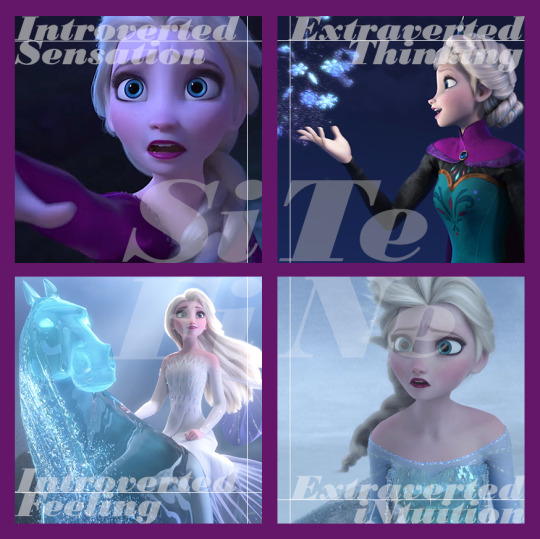
ELSA FROM FROZEN [ISTJ] “The Examiner”
DOMINANT FUNCTION: INTROVERTED SENSATION [Si]
This Queen is one who prefers to deal in concrete facts and experiences over dreamy ideas and theory. Like Extraverted Sensation types, as an ISJ her perceptions are based on her experiences, however instead of reacting and adapting to these perceptions (Anna ESFP), Elsa internalizes them. These experiences build up her identity.
Her dominant introverted sensation perception is best exhibited in her perception of her powers throughout the two films. At first Elsa plays around with her powers with Anna. As her powers make Anna happy, Elsa is happy with her powers. However, once she hurts Anna and her parents react negatively to her powers she learns from this experience to fear her own powers the way her parents do. She internalizes this experience beyond any outside person’s intentions. She represses it and pushes it down to a point of wearing gloves and continuing to seclude herself after her parents are no longer forcing her isolation.

Once her powers start to go out of her control she doesn’t try to learn about her powers or about where they came from. She isn’t seeking a deep meaning. Instead she decides to further isolate herself even from Anna. Her experience has continually taught her that the only way to keep others safe is to stay away from them. Therefore she makes her own ice castle where she can fully use her powers but in no way can she hurt others with them. At least that is what she thinks. It takes being pulled outside of herself and seeing the bigger picture to come back. Her connections with people saves her. But clearly this was a temporary fix because she doesn’t truly address her power in Frozen.
It takes being shaken and forced out of her comfort zone to truly confront the mysteries of her powers and break her home life routine in Frozen II. This is something she wants to do, but is scared and hesitant of. She isn’t looking for some great adventure as she is comfortable and safe in the predictability of her routine. Not until she leaves her home and collects more positive experiences with her powers is she able to change and accept who she is fully. Elsa needs this experience to change her mind. She isn’t one to rely on troll prophecy or wishful thinking.
SECONDARY FUNCTION: EXTRAVERTED THINKING [Te]
When judging a situation Elsa is far more comfortable with logic rather than working with people. She works specifically with extraverted logic which is grounded in accepted and shared knowledge. This gives Elsa a sense of control, which is huge to her character. She needs to feel in control of herself and the world around her. She doesn’t like to appear out of control to anyone. It is part of what contrasts her with Anna so much. Anna is all about getting out and having new experiences. She takes risks. Elsa does not like being seen as someone who would just let something happen to her like that.

Elsa does not have the best tact. We see that when she verbalizes her thoughts and opinions she isn’t always thinking of the social harmony of it all. Her instinct isn’t diplomacy or navigating the social norms of a situation. She is sharp to Anna about what is best for both of them. Always the practical one, she doesn’t have time for Anna’s flights of fancy at the beginning of Frozen. The more in emotional turmoil she is, the less comfortable she is with her own feelings. This leads are to be harsher to those around her.
Another aspect of Te we see in Elsa, is her search for finding a role. She wants to be able to use her gifts to help. She initially thinks this is as queen, but it doesn’t sit right. Through her experiences into the unknown she finds what that role truly is. Not until she feels useful in her new role as the in-between of spirits and humans is she fully realized. As an ISTJ, she finds herself calmer and more confident now that she has found a way for her gifts to be used.
TERTIARY FUNCTION: INTROVERTED FEELING [Fi]
Although Elsa can come off as logical she is a well of deep emotion as well. Because it is lower in her functional stack and is focused inward, being an introverted function, her emotions and feelings are largely unseen on the outside. It can be hard for those who don’t know her intimately to know if she is doing okay or not.

However, Elsa often gets her Fi confused. We see this the most in the first film. Her over reliance on Fi rather than Te judgement is what brings us to her self isolation. First she takes in her experiences with Si, her inferior Ne scares her, and instead of going to her Te she recedes into Fi judgment. This is tricky, because it fuels her Si perceptions that grant her comfort in isolation. She thinks it is the moral thing to do. Elsa becomes stubborn in the idea that this is the good thing to do and that she will only cause harm to others. The feeling of being morally right guided simply internally and not by anything or anyone outside herself really shows itself in how much she digs her heels in to stay away from everyone.
INFERIOR FUNCTION: EXTRAVERTED INTUITION [Ne]
Elsa has a particularly difficult time with change. Don’t get me wrong, once she internalizes the change through her other functions she is open to a new path, but she initially struggles with the chaotic world around her altering. As things initially started to change with her and her sister being able to leave the palace grounds, she sticks to isolating herself and the familiar. She finds comfort in the predictable. Which makes her repression of her powers all the worse as they start coming out.

As an ISTJ, Elsa can feel comfortable going inward when really it is outward that she should really be looking. Because of this she misses her sister trying to reach out to her. A huge part of her journey throughout both films is being more comfortable with the external world and the meanings hidden within it. We see her really engage with her inferior Ne journey in the second film. Although it was experience that pushed her to it, she learns where her powers come from and what they mean. This was crucial to her finding happiness but was not something that came innate to her.
We see her embrace an Ne perspective by the end of the second film as she accepts her role and the amount she can control within it. Although it is great she found her way to her role in the forest, a big part of that was letting go of control of the kingdom and Anna. She had to learn what she can’t control the world around her and she can’t keep overly controlling herself to find comfort. She learns to accept the external world that has meaning outside of herself.
#ISTJ#ISTJ winner#character#Elsa#Frozen#Frozen 2#mbti#profile#character profile#functions#dominant#secondary#tertiary#inferior#Si#Fi#Te#Ne#introverted sensation#secondary extraverted thinking#tertiary introverted feeling#inferior extraverted intuition#2019 follower favorite winner
127 notes
·
View notes
Text
Next Steps
I am now working on the profiles for all the 2019 winners. In the meantime, I am enjoying these pairing asks. :)

29 notes
·
View notes
Note
do you have any infp x estj pairings - romantic or platonic
INFP x ESTJ Relationships
Following text pulled from Truity:
The two of you have some very fundamental differences in how you see things, and this can make getting along a challenge for both of you. That's not to say you shouldn't be friends; in fact, you might find that spending time with this person introduces you to ways of thinking that help you learn and grow. But this relationship will not be without its frustrations.
INFP: Fundamentally, [the INFP is] concerned with people, relationships, and values. [They] are a highly idealistic [people] and are always looking for opportunities to make the world a better place. [They] empathize easily with others, and [they] often feel their suffering acutely. But [they] never accept suffering as a fact of life; to [them], we all have a responsibility to change, improve, and become better than we are. [They] can easily imagine a better world, and [they] enthusiastically embrace change when you see it as a positive move forward.
ESTJ: [The ESTJ] puts a high value on tradition and stability. It's not that [they] don't care about people or making the world a better place, but [they] tend to be suspicious of change in general, and [they] rarely see it as the first solution. [They] tend to believe that the best way to serve people is by keeping things consistent and predictable, and [they] often find the [INFP’s] supposedly “innovative” ideas unnecessary and disruptive. At [their] worst together, they'll tend to view [the INFP] as flighty, unrealistic, and impractical. The [INFP will] see you as dull, stagnant, and unimaginative.
The same things that irritate you about one another are also opportunities for learning. Yes, [the INFP] has wonderful ideas, but they also truly can be a bit impractical. [The ESTJ] can help you think through the realities of [the INFP’s] ideas so that [the INFP is] better able to actually make them happen. And for [the INFP’s] part, they have an opportunity to get [the ESTJ] out of their rut and help them imagine possibilities for a better world. If [the INFP plays] it right, they may actually become enchanted with your creativity and wide-eyed idealism.
Fictional Examples in no specific order:
1. Steve Smith [INFP] x Stan Smith [ESTJ] from “American Dad”
2. Todd Chavez [INFP] x Princess Carolyn [ESTJ] from “Bojack Horseman”
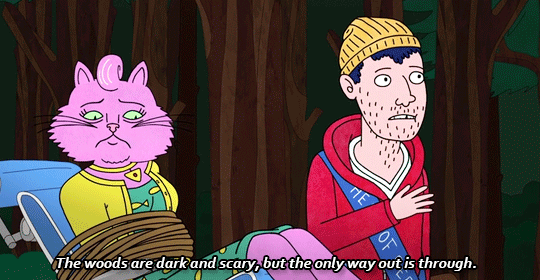
3. Cinderella [INFP] x Lady Tremaine [ESTJ] from Disney’s animated “Cinderella”
4. Valka [INFP] x Stoick [ESTJ] from “How To Train Your Dragon”
5. Sadness [INFP] x Anger [ESTJ] from Disney’s “Inside Out”
6. John Redcorn [INFP] x Hank Hill [ESTJ] from “King of the Hill”
7. Merryweather [INFP] x Flora [ESTJ] from Disney’s animated “Sleeping Beauty”
8. Frodo Baggins [INFP] x Boromir [ESTJ] from “The Lord of the Rings”
9. Kylo Ren [INFP] x General Armitage Hux [ESTJ] from “Star Wars”
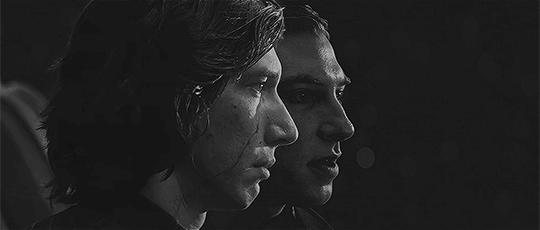
10. Sybill Trelawney [INFP] x Hermione Granger [ESTJ] from “Harry Potter”
11. Earnest ‘Earn’ Marks [INFP] x Van [ESTJ] from “Atlanta”
12. Phoebe Buffay [INFP] x Monica Geller [ESTJ] from “FRIENDS”
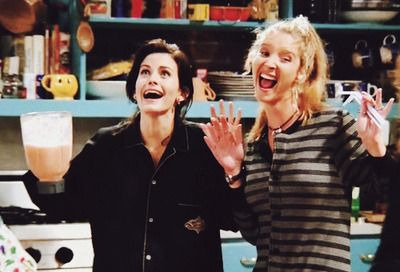
13. Frankie Bergstein [INFP] x Robert Hanson [ESTJ] from “Grace and Frankie”

14. Nell Crain [INFP] x Shirley Crain [ESTJ] from Netflix’s “The Haunting of Hill House”
15. Wes Gibbons [INFP] x Micaela Pratt [ESTJ] from “How To Get Away with Murder”
16. Dorian Williams [INFP] x Alaric Saltzman [ESTJ] from “Legacies”
17. Charlie [INFP] x Ava Sharpe [ESTJ] from “Legends of Tomorrow”
18. Merlin [INFP] x Uther Pendragon [ESTJ] from BBC’s “Merlin”
19. April Ludgate [INFP] x Craig Middlebrooks [ESTJ] from “Parks and Recreation”
20. David Rose [INFP] x Johnny Rose [ESTJ] from “Schitt’s Creek”
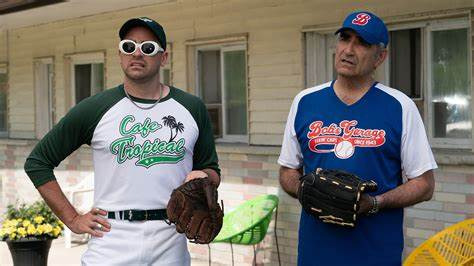
21. Mike Wheeler [INFP] x Lucas Sinclair [ESTJ] from “Stranger Things”
22. Nia Nal [INFP] x J’onn J’onzz [ESTJ] from “Supergirl”
23. Vanya [INFP] x Pogo [ESTJ] from “The Umbrella Academy”
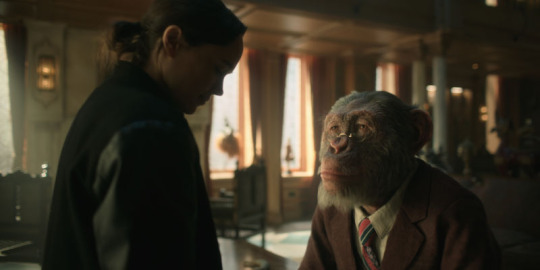
199 notes
·
View notes
Note
On the Myer's Briggs personality website it says that Captain America is an ISFJ. I was wondering if you had any reason as to why he wasn't included in the ISFJ section of your blog?
Yes, the reason being he is typed as ISFP on this blog.
His profile is here: Steve Rogers “Captain America” [ISFP]
21 notes
·
View notes
Note
hate to jump on the bandwagon that is inbound but any esfp x entp pairings? thanks!
ESFP x ENTP
Text taken from Truity:
At first glance, it may seem as though the two of you have nothing in common—and in fact, you do have very different ways of seeing the world and thinking about things.
ESFP: an active, hands-on person who likes to live in the moment. ESFPs enjoy building things, doing things, and seeing a concrete result for what they do. They have little interest in fantasy, and like to stay firmly grounded in reality. They spend very little time wondering about the meaning of things or theorizing about how the world could be different; they are too busy enjoying it as it is.
ENTP: is imaginative and analytical. They think about things deeply and enjoy playing with ideas and theories. More than action, they prize understanding, and may be more interested in theorizing about something than actually experiencing it. They are drawn to innovation and imagination and can sometimes lose track of what's going on in the real world
So what might draw you together? Your differences mean that you actually have a lot to offer one another. The ENTP may inspire the ESFP to slow down and think more deeply about the meaning of things, rather than just doing what feels right in the moment. In turn, the ESFP can help the ENTP to get out of their heads and enjoy life for what it is.
In no specific order:
1. Finn the Human [ESFP] x Jake the Dog [ENTP] from “Adventure Time”

2. Korra [ESFP] x Varrick [ENTP] from “Avatar: Legend of Korra”
3. Hiro Hamada [ENTP] x Fred [ESFP] from “Big Hero 6″
4. Claudia [ENTP] x Soren [ESFP] from “The Dragon Prince”

5. Professor Hubert J. Farnsworth [ENTP] x Bender [ESFP]
6. Jack Skellington [ENTP] x Oogie Boogie [ESFP]
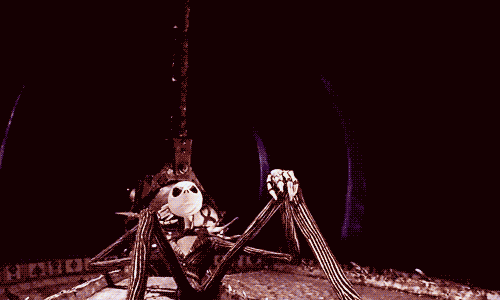
7. Hank Scorpio [ENTP] x Homer Simpson [ESFP] from “The Simpsons”
8. Peter B. Parker [ENTP] x Spider-Man [ESFP] from “Spider-Man: Into the Spider-Verse”
9. Hondo Ohnaka [ENTP] x Anakin Skywalker [ESFP] from “Star Wars”
10. Kevin [ENTP] x Tess [ESFP] from “27 Dresses”
11. Lestat [ENTP] x Claudia [ESFP] from “Interview with the Vampire”
12. Baloo [ENTP] x Mowgli [ESFP] from “The Jungle Book, 2016″
13. Tony Stark [ENTP] x Thor [ESFP] from “Marvel Cinematic Universe”
14. Jack Sparrow [ENTP] x Elizabeth Swann [ESFP] from “Pirates of the Caribbean”

15. Lord Henry Wotton [ENTP] x Dorian Gray [ESFP] from “The Picture of Dorian Gray”
16. Jeff Winger [ENTP] x Pierce Hawthorne [ESFP] from “Community”
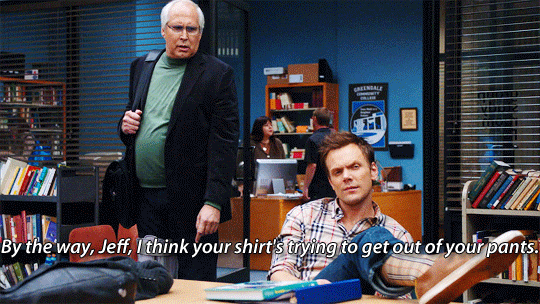
17. 10th Doctor [ENTP] x Captain Jack Harkness [ESFP] from “Doctor Who”

18. Hoban ‘Wash’ Washburne [ENTP] x Kaylee Frye [ESFP] from “Firefly”
19. HR Wells [ENTP] x Cisco Ramon [ESFP] from “The Flash”
20. Chandler Bing [ENTP] x Joey Tribbiani [ESFP] from “Friends”

21. Tyrion Lannister [ENTP] x Cersei Lannister [ESFP] from “Game of Thrones”
22. Michael [ENTP] x Jason Mendoza [ESFP] from “The Good Place”
23. Dennis Reynolds [ENTP] x Dee Reynolds [ESFP] from “It’s Always Sunny in Philadelphia”
24. Malcolm [ENTP] x Hal [ESFP] from “Malcolm in the Middle”
25. Dorian Gray [ESFP] x Brona Croft/Lily [ENTP] from “Penny Dreadful”
26. King Henry VIII [ESFP] x Anne Boleyn [ENTP] from “The Tudors”
122 notes
·
View notes
Photo

2019 ISTP FOLLOWER FAVORITE WINNER:
MULAN FROM DISNEY’S MULAN
Mulan almost made the first chart but under the wrong type (my bad). Now she graces the 2019 chart as your favorite ISTP. Her character profile will be updated.
79 notes
·
View notes
Photo

2019 ENTJ FOLLOWER FAVORITE WINNER:
AZULA FROM AVATAR: THE LAST AIRBENDER
ATLA is back at it again! Azula takes the crown of favorite ENTJ. An updated character profile is coming your way.
#ENTJ#ENTJ characters#mbti#follower favorite#2019#winner#results#azula#atla#avatar the last airbender
45 notes
·
View notes
Photo

2019 ESTP FOLLOWER FAVORITE WINNER:
SUKI FROM AVATAR: THE LAST AIRBENDER
Another win for ATLA! Can’t wait for the profile to come. :)
32 notes
·
View notes
Photo

201: INTJ Follower Favorite Winner:
BRUCE WAYNE “BATMAN” FROM DETECTIVE COMICS
Yes, I am award the graphic technically reads Detective Comics Comics. :) Bruce Wayne is an iconic INTJ and really a perfect archetype of the INTJ. It will be an absolute treat to write his profile.
Only 3 more characters left.
40 notes
·
View notes
Note
Hi!!! Do u know any intp x infj pairings in media?
Just like the other ask, I like to include all kinds of relationships for these. They can be enemies, romantic, friends, co-workers, family, etc.
1. Milo James Thatch [INTP] x Princess Kida [INFJ] from Atlantis: The Lost Empire

2. Callum [INTP] x Viren [INFJ] from The Dragon Prince
3. Harley Quinn [INFJ] x Poison Ivy [INTP] from DC

4. Charlie Brown [INTP] x Linus [INFJ] from The Peanuts
5. Professor Frink [INTP] x Lisa Simpson [INFJ] from The Simpsons
6. Sigmund Freud [INTP] x Carl Jung [INFJ] from A Dangerous Method]
7. Morpheus [INFJ] x Neo [INTP] from The Matrix

8. Carlisle Cullen [INTP] x Alice Cullen [INFJ] from Twilight
9. The Merlin [INTP] x Morgaine [INFJ] from The Mists of Avalon
10. Rosalind Walker [INTP] x Sabina Spellman [INFJ] from Chilling Adventures of Sabrina
11. Steven Crain [INTP] x Theodora Crain [INFJ] from Netflix’s The Haunting on Hill House
12. Dr. Victor Frankenstein [INTP] x Vanessa Ives [INFJ] from Penny Dreadful

194 notes
·
View notes
Photo

2019: ISFP FOLLOWER FAVORITE WINNER:
MILES MORALES FROM “SPIDER-MAN: INTO THE SPIDER-VERSE”
I am so excited that Miles has won! He is such an inspiration and the film is just incredible. Look forward to his character profile coming your way. He now joins past ISFP winners: Steve Rogers “Captain America,” Zuko, and Bob Belcher. Just goes to show that being the same type doesn’t make you a cookie cutter character.
#ISFP#characters#2019#follower favorite#results#winner#ISFP characters#mile morales#spider-man: into the spider-verse
35 notes
·
View notes
Note
hello! do you know any infp/infj pairs? sorry if you've posted already
These are fun and I am always typing and retyping. So let’s do this! My pairs will include all categories of relationships. They are in no particular order.
Also here is some text about INFP & INFJ relationships from Truity:
[They] are both idealistic, humanistic people with a deep concern for other people. Neither of you is content to simply accept the injustices and cruelties of the world around you; you feel things deeply, and want to make the world a better, gentler place.
[The INFP’s] idealism is a wonderful commonality, but it's also a potential fracture point. If you agree on the details of right and wrong, you may almost appear to be thinking with one mind. If you don't, you may find it difficult to "agree to disagree" as you are both so passionate about what you believe. Although you're very similar people, your relationship can actually be quite explosive if you come across an area in which you disagree about what is right.
1. Cinderella [INFP] X Prince Charming [INFJ] from Disney’s Cinderella

2. Mona Simpsons [INFP] x Lisa Simpson [INFJ] from The Simpsons
3. Thomas Sharpe [INFJ] x Edith Cushing [INFP] from Crimson Peak
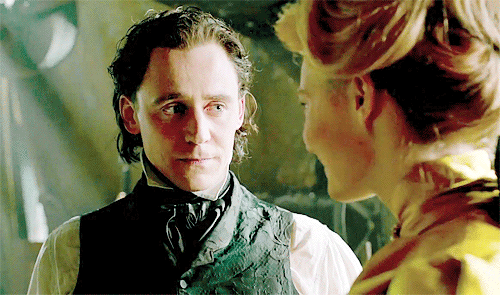
4. Galadriel [INFJ] x Frodo Baggins [INFP] from The Lord of the Rings

5. Scarlet Witch [INFP] x Vision [INFJ] from Marvel Cinematic Universe

6. Albus Dumbledore [INFJ] x Sybill Trelawney [INFP] from Harry Potter
7. Raven [INFP] x Maorgaine [INFJ] from The Mists of Avalon
8. Violet Harmon [INFP] x Dr. Ben Harmon [INFJ] from American Horror Story: Murder House
9. Sabrina Spellman [INFJ] x Theo Putman [INFP] from The Chilling Adventures of Sabrina
10. Nell Crain [INFP] x Theodora Crain [INFJ] from Netflix’s The Haunting on Hill House
11. Joseph Black Moon [INFP] x Rev Nathanial Cole [INFJ] from Hell On Wheels
12. Wes Gibbons [INFP] x Laurel Castillo [INFJ] from How to Get Away with Murder
13. Merlin [INFP] x Morgana [INFJ] from BBC’s Merlin
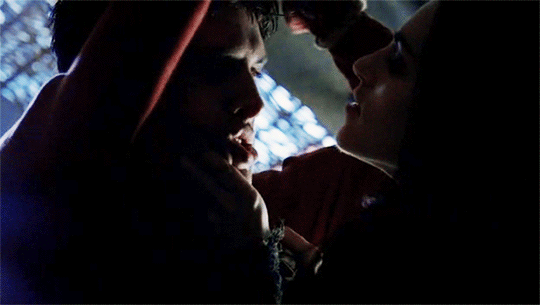
14. Belle French [INFP] and Rumpelstiltskin [INFJ] from Once Upon a Time

15. John Clare [INFP] and Vanessa Ives [INFJ] from Penny Dreadful
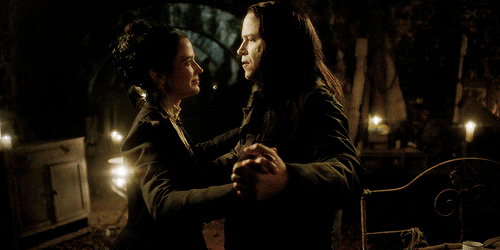
16. Mike Wheeler [INFP] x Will Byers [INFJ] from Stranger Things

17. Floki [INFP] x Princess Aslaug [INFJ] from Vikings
18. Dolores Abernathy [INFP] x Bernard Lowe [INFJ] from Westworld
268 notes
·
View notes
Photo

2019: ENFJ Follower Favorite Winner:
KATARA FROM AVATAR: THE LAST AIRBENDER
I am going to be honest. I can’t believe it took four years for Katara to make it to the chart when Toph, Sokka, Aang, and Zuko have all already made it. I am happy about the ATLA resurgence! I cannot wait to write her profile.
45 notes
·
View notes